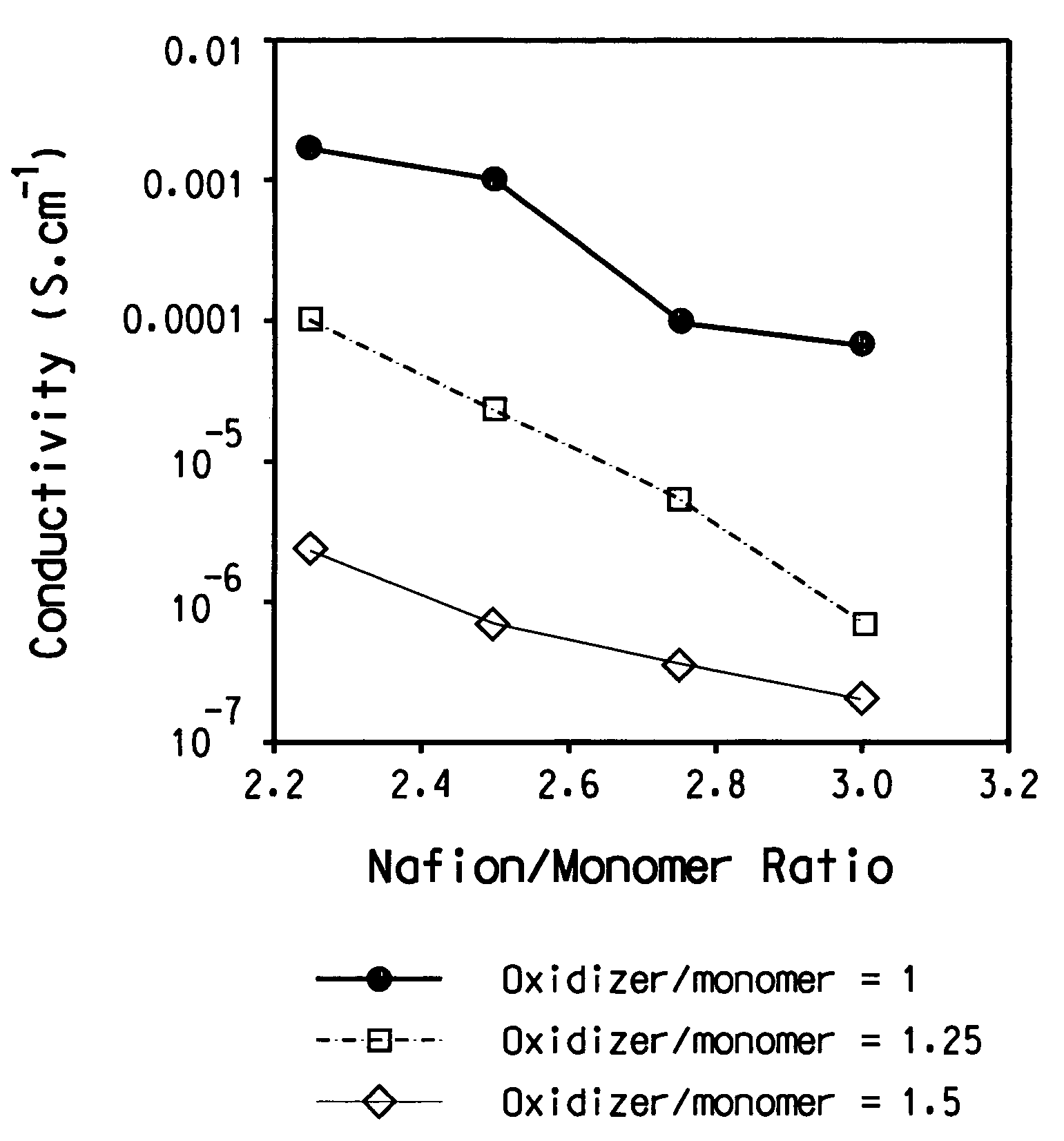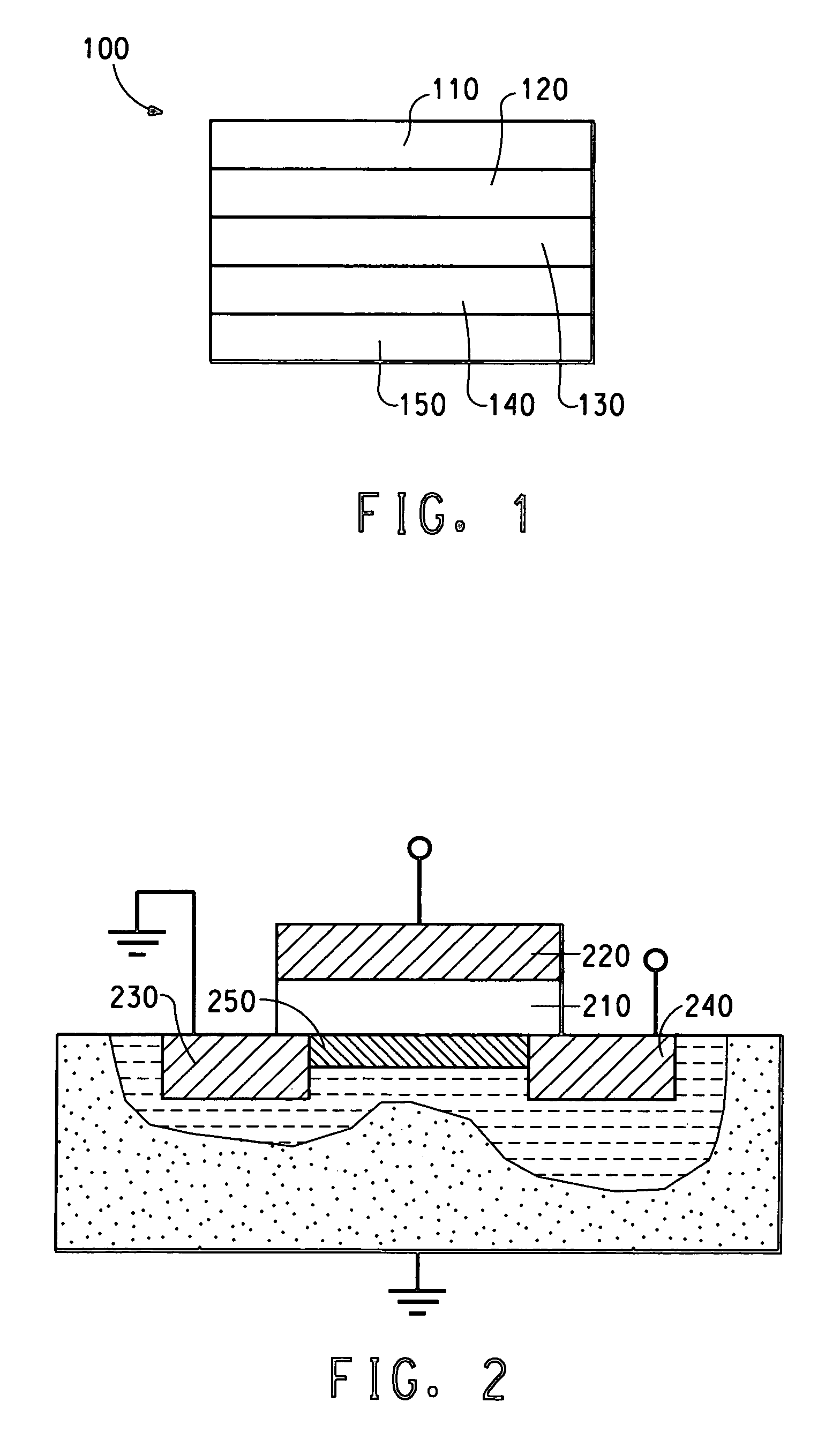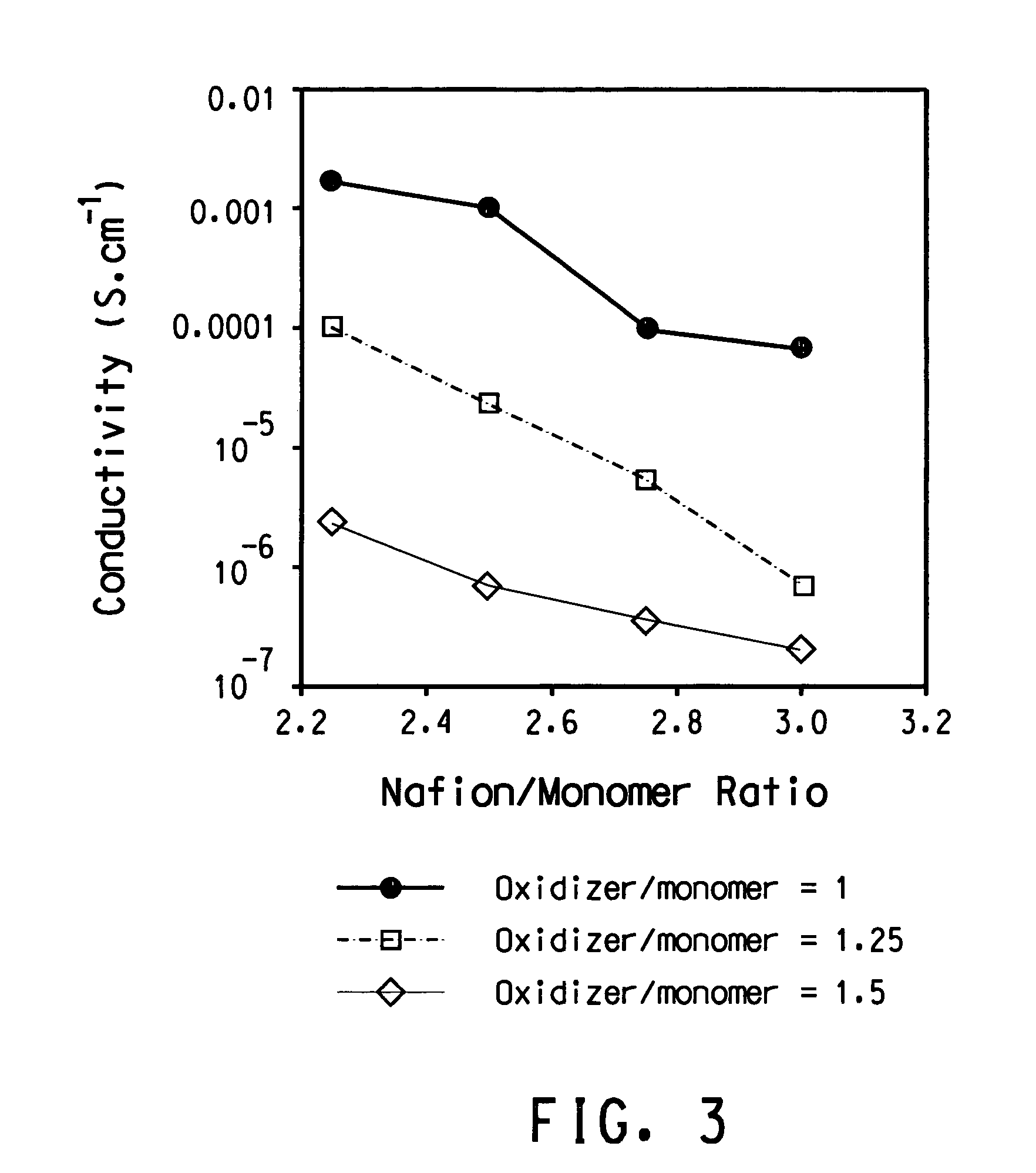Water dispersible substituted polydioxythiophenes made with fluorinated polymeric sulfonic acid colloids
a technology of fluorinated polymer sulfonic acid and water dispersible substituted polydioxythiophene, which is applied in the direction of non-metal conductors, conductors, transportation and packaging, etc., can solve the problems of corrosion within the device, low ph of water soluble polymer sulfonic acid dispersions, and undesirable low ph levels of water soluble polymer sulfonic acid
- Summary
- Abstract
- Description
- Claims
- Application Information
AI Technical Summary
Problems solved by technology
Method used
Image
Examples
example 1
[0157]This Example illustrates polymerization of (sulfonic acid-propylene-ether-methylene-3,4-dioxyethylene)thiophene in the presence of Nafion®. A 25% (w / w) aqueous colloidal dispersion of perfluroethylenesulfonic acid with an EW of 990 is made using a procedure similar to the procedure in U.S. Pat. No. 6,150,426, Example 1, Part 2, except that the temperature is approximately 270° C. The dispersion is diluted with water to form a 12.5% (w / w) dispersion for the polymerization.
[0158]63.87 g (8.06 mmoles of Nafion® monomer units) Nafion® aqueous colloidal dispersion, and 234.47 g deionized water will be massed into a 500 mL jacketed three-necked round bottom flask. The mixture will be stirred for 45 minutes before the addition of ferric sulfate and sodium persulfate. A stock solution of ferric sulfate will be made first by dissolving 0.0141 g ferric sulfate hydrate (97%, Aldrich cat. #30,771-8) with deionized water to a total weight of 3.6363 g. 0.96 g (0.0072 mmoles) of the ferric s...
example 2
[0159]This Example illustrates polymerization of (propyl-ether-ethylene-3,4-dioxyethylene)thiophene in the presence of Nafion®. The Nafion® will be the same as in Example 1.
[0160]63.87 g (8.06 mmoles of Nafion® monomer units) Nafion® aqueous colloidal dispersion, and 234.47 g deionized water will be massed into a 500 mL jacketed three-necked round bottom flask. The mixture will be stirred for 45 minutes before the addition of ferric sulfate and sodium persulfate. A stock solution of ferric sulfate will be made first by dissolving 0.0141 g ferric sulfate hydrate (97%, Aldrich cat. #30,771-8) with deionized water to a total weight of 3.6363 g. 0.96 g (0.0072 mmoles) of the ferric sulfate solution and 0.85 g (3.57 mmoles) sodium persulfate (Fluka, cat. # 71899) will be then placed into the reaction flask while the mixture will be stirred. The mixture will then be stirred for 3 minutes prior to addition of 0.6685 g (2.928 mmoles) of (propyl-ether-ethylene-3,4-dioxyethylene)thiophene mon...
example 3
[0161]This example illustrates slow injection of both ethylenedioxythiophene (“EDT”) monomer and oxidizing agent solution into the reaction mixture containing iron(III) sulfate catalyst, water, Nafion® and HCl co-acid. The Nafion® used is the same as in Example 1.
[0162]In a 2000 mL reaction kettle are put 715 g of 12% solid content aqueous Nafion® dispersion (82 mmol SO3H groups), 1470 g water, 0.5 g (0.98 mmol) iron(III)sulfate (Fe2(SO4)3), and 1406 μL of 37% HCl (18.1 mmol). The reaction mixture is stirred for 15 minutes at 200 RPM using an overhead stirrer fitted with a double stage propeller type blade before addition of 7.78 g (32.8 mmol) sodium persulfate (Na2S2O8) in 60 mL of water, and 3.17 mL ethylenedioxythiophene (EDT). The addition is started from separate syringes using addition rate of 0.9 mL / h for Na2S2O8 / water and 50 μL / h for EDT while continuously stirring at 200 RPM. EDT addition is accomplished by placing the monomer in a syringe connected to a Teflon® tube that l...
PUM
| Property | Measurement | Unit |
|---|---|---|
| Fraction | aaaaa | aaaaa |
| Dispersibility | aaaaa | aaaaa |
Abstract
Description
Claims
Application Information
 Login to View More
Login to View More - R&D
- Intellectual Property
- Life Sciences
- Materials
- Tech Scout
- Unparalleled Data Quality
- Higher Quality Content
- 60% Fewer Hallucinations
Browse by: Latest US Patents, China's latest patents, Technical Efficacy Thesaurus, Application Domain, Technology Topic, Popular Technical Reports.
© 2025 PatSnap. All rights reserved.Legal|Privacy policy|Modern Slavery Act Transparency Statement|Sitemap|About US| Contact US: help@patsnap.com



